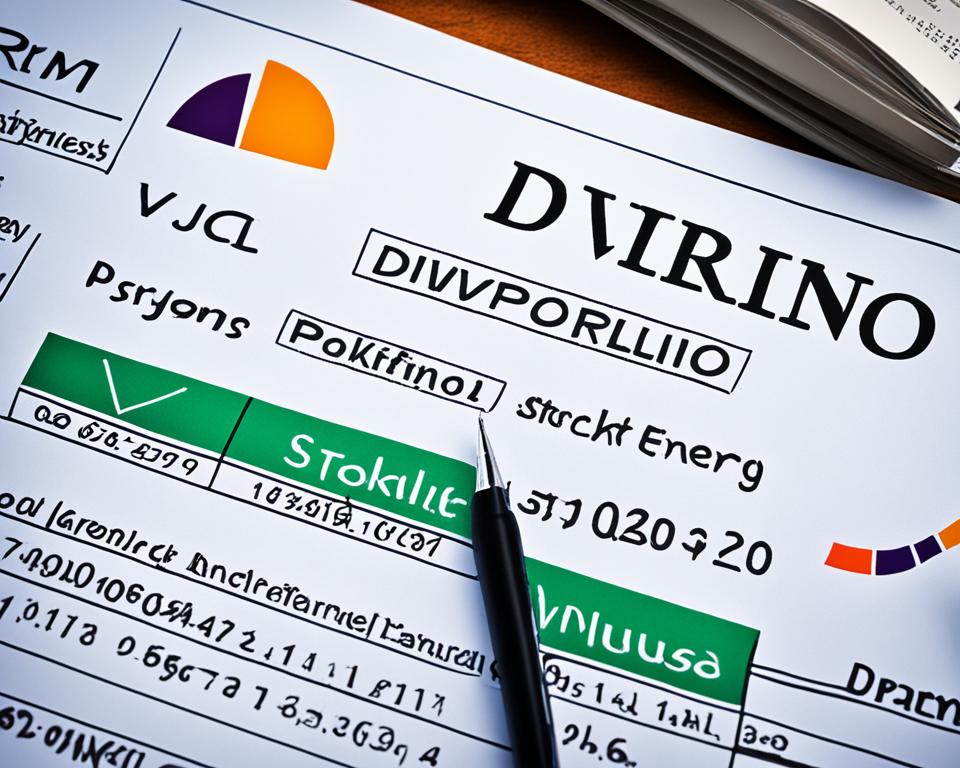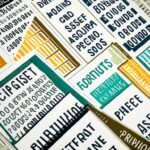When we embark on the journey of stock investment, one of the luring aspects is receiving dividends – a share in a company’s profit. Investors often ask, “how often do you get dividends from stocks?” The answer isn’t one-size-fits-all, as different companies have different dividend payment schedules. While many opt for the commonly seen quarterly payouts, certain investments, such as Real Estate Investment Trusts (REITs) and Master Limited Partnerships (MLPs), may bless shareholders with monthly dividends due to their unique disbursement requirements. It’s this dividend payment schedule that not only reflects a company’s financial health but also shapes our investment returns. Understanding the frequency of these payouts holds the key to building a portfolio that aligns with our financial rhythms.
Key Takeaways
- Dividend frequency defines how regular a company disburses profits, ranging from monthly to annually.
- Most U.S. stocks pay out dividends quarterly, often in coordination with earnings reports and other financial updates.
- Management decisions are pivotal in setting the dividend frequency based on numerous factors, including the company’s cash flow and strategic financial goals.
- Special dividends are extra payouts that can sweeten an investor’s total return, though they aren’t accounted for in forward-looking yield predictions.
- REITs and MLPs, by requirement, often distribute dividends more frequently, with some opting for a monthly rhythm.
Understanding Dividend Frequency and Distributions
As savvy investors, we understand that knowledge of stock dividend frequency is crucial to projecting our investment income. The term “stock dividend frequency” essentially refers to the regularity with which a company pays out dividends to its shareholders. A firm’s distribution of profits can greatly impact our portfolio, especially when it comes to planning our financial future.
Let’s delve into what influences the stock dividend payout frequency and how it varies across different types of investments. Such insights empower us to make informed decisions that align with our investment goals.
Defining Dividend Payout Frequency
The concept of dividend disbursement intervals lies at the heart of income investing. Dividend payout frequency varies from monthly to annually, and it is our golden ticket to understanding how soon and often our investments could potentially reward us. A consistent dividend payout schedule not only signals a company’s stable financial condition but can also provide a dependable income stream for us as investors.
Variations Across Investments
When examining the variations in stock dividend frequency, it is clear that different investment vehicles may exhibit different payout schedules. For example, individual stocks typically disburse dividends on a quarterly basis, whereas REITs and MLPs might offer monthly dividend payments. Understanding these variations allows us to cater our investment strategy to either accumulate dividends more rapidly or to opt for the traditionally larger albeit less frequent payouts.
The Role of Corporate Management in Determining Payouts
Behind each dividend payout frequency decision lies the strategic planning of corporate management. Their role in determining stock dividend payout frequency is pivotal and involves analyzing factors such as cash flow, performance, and market conditions. This corporate agility ensures that the company not only retains enough capital for growth but also rewards its shareholders in a manner that is enticing and sustainable.
| Investment Type | Common Dividend Frequency | Reason for Frequency |
|---|---|---|
| Individual Stocks | Quarterly | Aligns with earnings reports and financial updates |
| REITs & MLPs | Monthly | Requirement to distribute a high percentage of income |
| Managed Funds | Varies (Monthly, Quarterly, Semi-Annually) | Based on fund’s strategy and cash flow management |
As we navigate the diverse seas of the stock market, our compass must always point towards a thorough understanding of dividend disbursement intervals. Whether it contributes to our regular income, or it sits as reinvested capital within our portfolios, the frequency of these payouts is an essential factor shaping our investment approach. Our shared goal is clear – to maximize the benefits that a company’s profitable standing can yield for us, the shareholders.
How Often Do You Get Dividends from Stocks?
As investors who strategically incorporate stocks into our portfolios, one crucial aspect we closely monitor is the stock dividend payment frequency. This refers to how often a company doles out dividends, and it’s a significant consideration for us as shareholders. Ensuring we’re familiar with each company’s dividend distribution timetable helps us predict our passive income and assess the long-term value of our investments.
Within the United States, most companies follow a traditional pattern of disbursing dividends on a quarterly basis. This schedule often aligns with the release of their earnings reports, adding a rhythm to our expectations of when to expect these payments.
However, some entities like Realty Income Corporation, stand out with their unique monthly dividend approach. Realty Income’s dedication to consistent monthly dividends has not only provided its shareholders with a steady income stream but also secured its prestigious status as a Dividend Aristocrat. This label is revered by us, investors, and signifies a company’s reliable and growing dividends spanning over 25 years.
Below is a glance at typical dividend payment frequencies that we, as shareholders, might encounter:
| Frequency | Description | Example |
|---|---|---|
| Monthly | Dividends paid out each month | Realty Income Corporation (Monthly Dividend Company) |
| Quarterly | Dividends paid out four times a year, often linked with quarterly earnings reports | Majority of US-based companies |
| Annually | Dividends paid out once a year | Companies outside the US, or specific industries within the US |
We keep an eye on the dividend distribution timetable to optimize our personal financial planning and to align our cash flow needs with the anticipated dividend income. This understanding ensures we’re fully attuned to the rhythm of returns offered by each particular stock within our diverse portfolios.
Different Types of Dividend Payout Schedules
As investors, understanding the nuances of dividend payment schedules is vital for calculating our passive income and strategically timing our investment moves. These schedules—ranging from monthly to semi-annually—dictate how often we receive these financial rewards and are a testament to the reliability and shareholder-friendliness of a company.
Monthly Dividends: A Closer Look
For those seeking steady cash flow, investments that offer a monthly dividend payment schedule are particularly attractive. Companies like Realty Income pride themselves on their ability to provide shareholders with frequent, reliable dividends, and it’s this consistency that bolsters our confidence as investors in their financial stewardship.
Monthly payouts provide us with a regular income stream that can be especially appealing for retirees or investors who depend on dividends for a significant portion of their income. Let’s explore some of these options through an informative table.
Quarterly Dividends: The Standard among US Stocks
A quarterly dividend payment schedule is the most common rhythm aligning with the fiscal quarters of U.S. companies. This cadence allows businesses to evaluate their financial performance and reliably distribute profits at a pace that balances growth with investor rewards.
Annual and Semi-Annual Dividends: Less Common but Relevant
While less frequent than their monthly and quarterly counterparts, annual and semi-annual dividends play a strategically significant role for long-term investors. These dividends are often larger in sum and can be pivotal in making investment decisions for those focused on end-of-year financial planning.
| Company | Type | Dividend Frequency |
|---|---|---|
| Realty Income Corporation | REIT | Monthly |
| Most U.S. Listed Companies | Various Industries | Quarterly |
| International Companies | Various Industries | Annual/Semi-Annual |
Additionally, special dividends serve as unexpected bonuses, and though not a part of the regular dividend distribution timetable, they provide a welcome boost to our returns. We, as investors, must keep abreast of each company’s specific dividend payment schedule to make the most out of these opportunities.
Whether we prefer a steadier stream of monthly payments or anticipate larger, less frequent payouts, our investment choices must reflect our personal financial goals and risk tolerance. Navigating through the variety of schedules requires careful planning and a deep understanding of each type of dividend payout schedule.
Examining Monthly Dividend Stocks and High-Yield Opportunities
Within the realm of high-yield dividend stocks, certain types of investments stand out for their frequent and substantial payouts. As investors who aim to maximize our income streams, we often explore the landscape of monthly dividends. Investment vehicles such as Real Estate Investment Trusts (REITs) and Master Limited Partnerships (MLPs) are particularly attractive due to their structures that often result in higher yields. Now, let us focus on the different high-yield opportunities and how they contribute to a stronger dividend strategy.
Real Estate Investment Trusts (REITs)
When we talk about monthly dividends, REITs often come to mind due to their mandated payout structures. As vehicles that hold and manage real estate assets, REITs have a legal obligation to return a majority of income to shareholders, translating into high-yield dividends. The regular cash flow from rents or mortgage payments enables REITs to sustain monthly dividends, making them a cornerstone in our high-yield portfolio.
Master Limited Partnerships (MLPs)
MLPs, akin to REITs, are designed to pass through most of their earnings to investors. These investments are typically involved in energy infrastructure and leverage their steady cash-generating operations to dispense dividends. The appeal of MLPs in our search for high yields is their potential for monthly dividends and the added benefit of tax advantages, as they are not subject to corporate income taxes.
High-Yielding Stocks: Whitestone REIT Case Study
Among the high-yield dividend stocks, Whitestone REIT shines as an example of a company with a robust monthly dividend framework. As of August 2021, Whitestone boasts a dividend yield of 4.52%, which is notably attractive in the world of income investing. By routinely deploying monthly dividends, Whitestone offers a compelling case study of how a meticulously crafted REIT can fit into our quest for monthly income.
As we continually seek to enhance our portfolio with investments that offer substantial and regular income, our focus on the mechanisms behind monthly dividends, REITs, and MLPs become essential. Let’s dive deeper into these high-yield dividend avenues to ensure our investments align with our financial aspirations.
| Investment Category | Typical Dividend Frequency | Dividend Yield |
|---|---|---|
| Real Estate Investment Trusts (REITs) | Monthly | Varies, can be high-yield |
| Master Limited Partnerships (MLPs) | Monthly | Usually high due to pass-through tax benefits |
| Whitestone REIT | Monthly | 4.52% (as of Aug. 2021) |
We invest with the philosophy that understanding and selecting the right mix of monthly dividend-paying stocks and high-yield investment opportunities can significantly impact our income potential. Whether it’s the steady cash flow from REITs or the tax-advantaged payouts from MLPs, we remain on the lookout for compelling high-yield options that align with our strategic dividend investing objectives.
Special Dividends and Their Impact on Investors
In our journey as shareholders, we sometimes encounter the pleasant surprise of a special dividend payment, a distinct and usually one-time profit sharing by a company. These distributions can result from various circumstances such as a significant asset sale or an unusual surplus in cash flow. The announcement of a special dividend payment tends to breed excitement among investors, as it often signals a company’s robust financial health and its commitment to shareholder returns.
For us as investors, the allure of special dividends lies in their ability to temporarily enhance our investment’s dividend yield. This temporary boost in yield augments the trailing 12-month dividend yield measurement of our investment, which is a snapshot of dividend income over the past year as a percentage of the stock price. However, this notable addition is not included in the future dividend yield projections, the ‘forward dividend yield,’ which estimates the income one might expect from an investment without these extraordinary distributions.
Let’s break down the impact of special dividends on both the trailing and forward dividend yield calculations:
| Dividend Type | Impact on Trailing 12-Month Yield | Impact on Forward Yield |
|---|---|---|
| Regular Dividend | Included | Included |
| Special Dividend | Enhances Yield Temporarily | Not Factored In |
As a result of this irregularity, special dividends can be seen as a windfall for investors at the time of issuance, an extra reward that possibly adds a considerable sum to the payout we receive. However, it is critical for us to understand that these are not sustainable increases to a company’s dividend yield and should not be expected to recur with the same frequency as regular dividends.
In conclusion, while special dividend payments have the potential to significantly augment our dividend yield in the short term, they should be perceived as bonuses on top of the customary return. By maintaining a strategic approach and adjusting our expectations accordingly, we can appreciate these special distributions when they come without overestimating their ongoing impact on our dividends’ performance.
Vital Dividend Payment Dates and What They Mean
As we dive into the world of dividends, there’s more to it than just the allure of a passive income stream. Equally critical to our strategy are the various important dates associated with dividend payments: the ex-dividend date, the record date, and the dividend payment date. Together, these dates form the crux of the dividend timeline, dictating when and how we receive our piece of the profit pie.
Understanding the Ex-Dividend Date
The ex-dividend date plays a pivotal role in the distribution of dividends. This is the critical cutoff point where we need to be holding shares to qualify for the upcoming dividend payment. Essentially, if we purchase shares on or after this date, we’ll miss out on the current round of dividends. It marks the point at which shares start selling without the right to receive the dividend, thus the “ex” (meaning “without” in Latin) in ex-dividend.
The Record Date and Shareholder Eligibility
Following the ex-dividend date is the record date. If we’re registered on the company’s books as a shareholder by this date, we’re entitled to receive the dividend. It’s the company’s way of saying, “You’re on the list!” The record date typically follows two business days after the ex-dividend date, thanks to the T+2 settlement rule in the stock market.
The Payment Date: Receiving Your Dividend
Finally, the dividend payment date is when our anticipation comes to fruition—the day we receive our dividends. On this date, companies distribute the declared dividends to the shareholders of record. The mode of payment usually reflects our preference, as dividends are often directly deposited into our brokerage accounts or sent via check. It’s the payoff for our investment patience and strategy, rewarding us for selecting dividend-paying stocks that complement our financial aspirations.
| Dividend Date | Description | Significance for Shareholders |
|---|---|---|
| Ex-Dividend Date | Shares sell without entitlement to current dividend | Must own shares before this date to receive dividend |
| Record Date | Company records shareholders eligible for dividend | Must be on the company’s books by this date |
| Dividend Payment Date | Company disburses dividend payments | Income is received either as cash or check |
Understanding these dates is fundamental for us as we map out our dividend strategy. By keeping track of the ex-dividend, record, and payment dates, we ensure that our investments yield the expected dividends, enhancing our portfolio’s performance and contributing to a sustainable income stream.
Dividend Payment Methods: Cash or Reinvestment
When dividends become payable, investors typically have a couple of routes to consider for these payments. The method chosen can have different implications for portfolio growth and personal cash flow. Understanding each payment method’s nuances is vital for aligning our investment strategy with our financial goals.
Receiving Dividends through Brokerage Accounts
For most of us, dividends are paid in cash and deposited directly into our brokerage accounts. This is the most straightforward method where cash dividends manifest as quick liquidity—available for reinvestment or withdrawal according to our needs. Once these dividends hit our accounts, we can either use the proceeds to buy other stocks or simply enjoy them as part of our income.
Direct Stock Purchase Plans
Some companies offer direct stock investment plans, which allow investors to buy shares directly from the company. These plans sometimes allow the reinvestment of dividends into additional shares of the company’s stock, often with minimal or no brokerage fees. Direct stock purchase plans can be an attractive option for long-term investors looking to incrementally increase their stake in a company.
Reinvesting Dividends with DRIPs
A strategy that’s attractive to investors focused on compounding their investments is the use of dividend reinvestment plans (DRIPs). These plans facilitate the automatic reinvestment of our cash dividends to purchase more shares or fractions of shares. DRIPs usually come without commission fees, making them an economical choice for those of us aiming to grow our investments over time.
Let’s consider the efficiency of using DRIPs with a brief table of their advantages:
| Advantages of DRIPs | Details |
|---|---|
| Automation | Automatic reinvestment of dividends into more shares. |
| Cost Efficiency | Most plans are commission-free, reducing the cost of investment. |
| Compounding Growth | Shares purchased with dividends may themselves generate future dividends, accelerating the growth of your investment. |
As investors, we have the power to decide the appropriateness of each dividend payment method based on our individual investment plans. Whether we opt for immediate cash dividends or prefer to compound our holdings through reinvestment, each method offers unique benefits that cater to our diverse financial strategies and objectives.
Dividend Yield vs. Dividend Payout Frequency
As veteran stockholders, we’re often entwined in the nuances between dividend yield and dividend payout frequency. While yield measures the bang for our buck, payout frequency schedules when we can expect this bang to resonate in our portfolios. For sure, understanding this distinction and its computations is instrumental in polishing our investment strategies for optimal income generation.
Calculating Forward Dividend Yield
Ahead on our investment track lies the task of estimating potential gains through the forward dividend yield calculation. Here’s how we unwrap this future-looking metric: we start by collating the most recent dividend payment and multiply it by the annual frequency rate. This anticipated annual dividend, when divided by the current stock price, yields a percentage that stands as a potential beacon of our investment’s income-producing capacity.
The forward dividend yield essentially acts as our financial crystal ball, providing a glimpse into the expected income from our investments.
Trailing 12-Month Dividend Yield and Special Dividends
Switching gears, we scope out the trailing 12-month dividend yield, which serves as our investment’s rearview mirror by displaying income received over the past year versus the current stock price. This gauge factors in the total of regular plus special dividends—those delightful ad hoc payouts that companies declare outside their standard disbursement schedules.
Special dividends often stir the pot of excitement, as they can significantly jack up the trailing 12-month dividend yield, albeit, temporarily. But don’t be misled by this surge; special dividends aren’t fixtures in the figure skating of future yields.
| Dividend Yield Type | Calculation Method | Significance |
|---|---|---|
| Forward Dividend Yield | Recent Dividend x Annual Frequency / Stock Price | Estimates future earning potential |
| Trailing 12-Month Dividend Yield | Total Dividends Last Year / Stock Price | Reflects actual income received |
For us, it becomes clear that a harp on the past performance via trailing yields and an eye on the horizon with forward calculations allow us to tune our investment instruments to the symphony of market dynamics. Leaning on these figures, we harmonize our expectations and cash flows, adeptly striking chords that resonate financial success.
Tax Implications of Receiving Dividends
Investing in dividend-paying stocks can be a lucrative strategy, but we must be cognizant of the tax implications tied to these taxable dividends. It is essential to remember that the IRS views dividends as taxable income, regardless of whether we receive them as cash or as an additional stock allotment. Let’s walk through the tax landscape of dividends to ensure we’re armed with the knowledge to comply effectively with IRS dividend taxation rules.
The tax rate applied to dividends can vary based on a multitude of factors, including the type of dividend received, the account in which the shares are held, and the length of time we’ve owned these shares. It’s not just about having fruitful investments but also about how efficiently we can manage the tax liabilities that come with them.
At the end of each fiscal year, companies provide us with a Form 1099-DIV, which summarizes the dividend payments we’ve received. This form features several key pieces of information that are pertinent when filling out our tax returns. Being detail-oriented with this form can save us from potential headaches come tax season.
| Dividend Type | Tax Treatment | Length of Ownership |
|---|---|---|
| Qualified Dividends | Lower tax rate | Must be held for a specific timeframe |
| Ordinary Dividends | Taxed as regular income | No holding period requirement |
| Special Dividends | Dependent on qualification | Varies based on corporate classification |
Precise reporting is paramount, as any miscalculation or omission can result in unpleasant encounters with the IRS. Let’s ensure we make the most of our investments by staying informed and compliant with the tax requirements associated with receiving dividends.
Conclusion
As we wrap up our exploration of the vital role dividend schedules play in strategic dividend investing, we arrive at a crucial truth. Knowing when and how often dividends are paid is paramount to making informed decisions that resonate with our financial goals. This knowledge empowers us as we chart our course through the choppy waters of the stock market, anchoring our investment strategies in the harbor of foresight and prudence.
The Importance of Knowing Dividend Schedules for Investment Decisions
Familiarity with dividend schedules is not just a matter of preference—it’s a pillar of sound investment strategy. By understanding these schedules, we align our investment choices with our need for regular income streams or our plans for re-investment. This awareness guides us toward securities that not only promise returns but also suit our personal cash flow requirements, allowing us to manage our finances with a deft hand and a clear vision.
Maximizing Returns through Strategic Dividend Investing
In the quest to maximize investment returns, applying the principles of strategic dividend investing is akin to setting the sails on our vessel to catch the prevailing winds. It encompasses a holistic approach to dividends, including assessing payout frequencies, staying alert to tax implications, and choosing investments that dovetail with our aspirations for growth and stability. Through such strategic planning, we aim to harness the full potential of our investments, turning the tide in our favor and steering toward the shores of financial prosperity.
FAQ
How often do you get dividends from stocks?
The frequency with which you get dividends from stocks can vary widely. In the United States, many stocks pay dividends on a quarterly basis, although there are some that offer monthly, semi-annual, or annual dividends as well. Certain types of investments, such as Real Estate Investment Trusts (REITs) and Master Limited Partnerships (MLPs), might also distribute dividends monthly due to different regulatory requirements or structures.
What is dividend payout frequency?
Dividend payout frequency refers to how regularly a company pays out dividends to its shareholders. This can be monthly, quarterly, semi-annually, or annually. The frequency is a policy set by the company’s board of directors and can be a factor to consider when making investment decisions.
Do all investments pay dividends at the same intervals?
No, the intervals at which dividends are paid can differ substantially across various types of investments. For example, most U.S. corporations typically distribute dividends quarterly, while REITs and MLPs may do so monthly. Additionally, some companies may pay special dividends at irregular intervals, as circumstances permit.
How do corporate managers determine dividend payout schedules?
Corporate managers take into account a variety of factors when determining the schedule and frequency of dividend payouts. These can include the company’s financial performance, its operational cash flow, industry-specific practices, and overall market conditions. They aim to maintain a consistent and sustainable dividend policy that aligns with the company’s strategic goals and the expectations of its shareholders.
What are monthly dividends and which companies offer them?
Monthly dividends are payouts made to shareholders every month, as opposed to the more common quarterly dividends. They provide a more frequent income stream and companies that offer them, like Realty Income Corporation, are popular among investors who require regular income distributions. Certain REITs and MLPs also pay dividends monthly due to their legal structure which typically requires them to distribute a high percentage of income to shareholders.
Are quarterly dividends the most common payout schedule for U.S. stocks?
Yes, for the majority of U.S. companies, dividends are typically paid out on a quarterly basis, coinciding with the companies’ earnings reports. This schedule is the most prevalent among publicly-traded companies in the United States.
How do annual and semi-annual dividends work?
Annual dividends are paid once a year, and semi-annual dividends are paid twice a year, usually every six months. While less common in the U.S. than quarterly dividends, they are more prevalent in certain foreign markets and specific industries. These schedules can suit companies with longer business cycles or those in more stable industries.
What are special dividends and why are they important?
Special dividends are one-time payments made to shareholders that typically occur outside of the regular dividend schedule. They can be due to the company having excess cash, after a profitable asset sale, or another special situation. While they can boost an investor’s income temporarily, they are not included in the calculation of forward dividend yield and should not be expected to recur regularly.
How do the ex-dividend date, record date, and payment date affect dividend receipt?
The ex-dividend date is the first date when new buyers of a stock will not receive the declared dividend. If you own the stock before this date, you’re entitled to the dividend. The record date follows, which is when the company officially determines who the shareholders of record are that will receive the dividend. Finally, the payment date is the actual day when the dividend is distributed to those shareholders who were on record as of the record date.
What methods can investors use to receive dividend payments?
Investors can receive their dividends in cash paid directly into their brokerage account, or they can opt into dividend reinvestment plans (DRIPs), where the cash dividends are automatically used to purchase additional shares of the issuing company, often without commission. Some companies also offer direct stock purchase plans, which allow investors to buy shares directly from the company with their dividend payments.
How is dividend yield related to dividend payment frequency?
Dividend yield is a measure of the income a stock generates through dividends in relation to its price. It’s a way to express the annual dividend income as a percentage of the stock price. The payment frequency is simply how often these dividends are paid out. A higher dividend yield can be attractive to income-seeking investors, but it is important to understand the frequency to accurately assess the income one can expect over the course of a year.
What are the tax implications of receiving dividends?
In the U.S., dividends are considered taxable income by the IRS and must be reported on your tax return. The tax rate varies depending on if dividends are classified as qualified or non-qualified, as well as your income level and how long you’ve held the shares. Dividends are reported to shareholders on Form 1099-DIV for each tax year.
Why should investors be aware of dividend schedules?
Being aware of dividend schedules is crucial for making informed investment decisions, particularly for those who rely on dividends for regular income. Knowing the frequency and timing of payouts can help investors better manage their cash flow and financial planning, as well as identify stocks that best meet their investment goals. It is also useful in maximizing investment returns by taking advantage of timing regarding the acquisition of stock before ex-dividend dates, if dividends are a priority.












